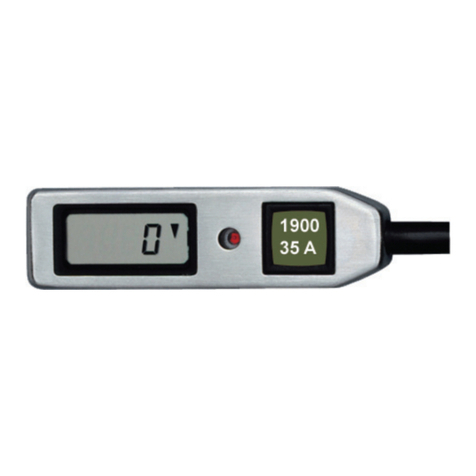CYPRES USER’S GUIDE
Page 2 Airtec GmbH
Contents
page
1. Function ....................................................................................................... 3
1.1 Design philosophy ......................................................................................... 3
1.2 Components .................................................................................................. 4
1.3 How CYPRES works .................................................................................. 5,6
1.4 Energy supply ................................................................................................ 7
1.5 Operational safety .......................................................................................... 8
2. Product Overview ....................................................................................... 9
2.1 Expert CYPRES ............................................................................................ 9
2.2 Student CYPRES ........................................................................................ 10
2.3 Tandem CYPRES ........................................................................................ 10
3. Installation .................................................................................................. 11
3.1 Processing unit ............................................................................................ 12
3.2 Release unit ............................................................................................... 13
3.3 Control unit ......................................................................................... 14,15,16
4. How to Operate CYPRES .......................................................................... 17
4.1 Handling the control unit .............................................................................. 17
4.2 Switching CYPRES on ............................................................................ 18,19
4.3 When to switch on or off .............................................................................. 20
4.4 Changing altitude reference ..................................................................... 21,22
4.5 Water jumps ................................................................................................ 23
5. Errors Display ........................................................................................... 24
6. Maintenance .............................................................................................. 25
6.1 Removal of the unit ...................................................................................... 25
6.2 Replacing battery ........................................................................... 26,27,28,29
6.3 Changing the release unit ............................................................................ 30
6.4 Technical service ......................................................................................... 31
7. Important Notes ......................................................................................... 32
7.1 For jump pilots ............................................................................................. 32
7.2 For users ..................................................................................................... 33
8. Repacking of Reserves ......................................................................... 34,35
8.1 Packing one-pin reserve containers ......................................................... 36,37
8.2 Packing two-pin reserve containers ............................................................. 38
8.3 Packing one-pin Pop Top reserve containers ............................................... 39
8.4 Packing two-pin Pop Top reserve containers .......................................... 40-45
8.4.1 Additional notes to the Racer and Racer Elite .............................................. 46
9. Abbreviated Users' Guide ........................................................................ 47
10. Installation in a New Rig ........................................................................... 48
11. Regarding Air Travel ................................................................................. 49
12. Technical Data ........................................................................................... 50
13. Guarantee .................................................................................................. 51
14. Electromagnetic Compatibility ................................................................ 52
15. Disclaimer .................................................................................................. 53
16. Key Words ............................................................................................. 54,55
17. Packing list ................................................................................................ 56
Trade Marks ............................................................................................... 57



































